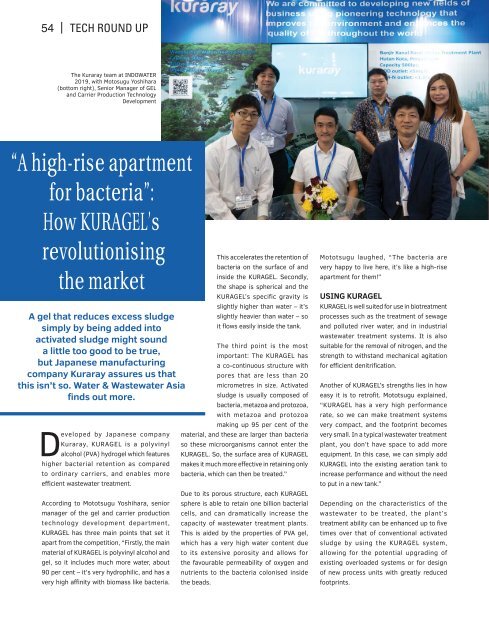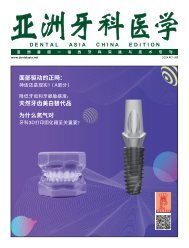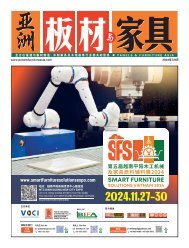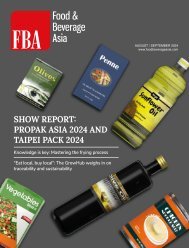Water & Wastewater Asia September/October 2019
Water & Wastewater Asia is an expert source of industry information, cementing its position as an indispensable tool for trade professionals in the water and wastewater industry. As the most reliable publication in the region, industry experts turn this premium journal for credible journalism and exclusive insight provided by fellow industry professionals. Water & Wastewater Asia incorporates the official newsletter of the Singapore Water Association (SWA).
Water & Wastewater Asia is an expert source of industry information, cementing its position as an indispensable tool for trade professionals in the water and wastewater industry. As the most reliable publication in the region, industry experts turn this premium journal for credible journalism and exclusive insight provided by fellow industry professionals. Water & Wastewater Asia incorporates the official newsletter of the Singapore Water Association (SWA).
- No tags were found...
Create successful ePaper yourself
Turn your PDF publications into a flip-book with our unique Google optimized e-Paper software.
54 | TECH ROUND UP<br />
The Kuraray team at INDOWATER<br />
<strong>2019</strong>, with Motosugu Yoshihara<br />
(bottom right), Senior Manager of GEL<br />
and Carrier Production Technology<br />
Development<br />
“A high-rise apartment<br />
for bacteria”:<br />
How KURAGEL’s<br />
revolutionising<br />
the market<br />
A gel that reduces excess sludge<br />
simply by being added into<br />
activated sludge might sound<br />
a little too good to be true,<br />
but Japanese manufacturing<br />
company Kuraray assures us that<br />
this isn’t so. <strong>Water</strong> & <strong>Wastewater</strong> <strong>Asia</strong><br />
finds out more.<br />
Developed by Japanese company<br />
Kuraray, KURAGEL is a polyvinyl<br />
alcohol (PVA) hydrogel which features<br />
higher bacterial retention as compared<br />
to ordinary carriers, and enables more<br />
efficient wastewater treatment.<br />
According to Mototsugu Yoshihara, senior<br />
manager of the gel and carrier production<br />
technology development department,<br />
KURAGEL has three main points that set it<br />
apart from the competition, “Firstly, the main<br />
material of KURAGEL is polyvinyl alcohol and<br />
gel, so it includes much more water, about<br />
90 per cent – it’s very hydrophilic, and has a<br />
very high affinity with biomass like bacteria.<br />
This accelerates the retention of<br />
bacteria on the surface of and<br />
inside the KURAGEL. Secondly,<br />
the shape is spherical and the<br />
KURAGEL’s specific gravity is<br />
slightly higher than water – it’s<br />
slightly heavier than water – so<br />
it flows easily inside the tank.<br />
The third point is the most<br />
important: The KURAGEL has<br />
a co-continuous structure with<br />
pores that are less than 20<br />
micrometres in size. Activated<br />
sludge is usually composed of<br />
bacteria, metazoa and protozoa,<br />
with metazoa and protozoa<br />
making up 95 per cent of the<br />
material, and these are larger than bacteria<br />
so these microorganisms cannot enter the<br />
KURAGEL. So, the surface area of KURAGEL<br />
makes it much more effective in retaining only<br />
bacteria, which can then be treated.”<br />
Due to its porous structure, each KURAGEL<br />
sphere is able to retain one billion bacterial<br />
cells, and can dramatically increase the<br />
capacity of wastewater treatment plants.<br />
This is aided by the properties of PVA gel,<br />
which has a very high water content due<br />
to its extensive porosity and allows for<br />
the favourable permeability of oxygen and<br />
nutrients to the bacteria colonised inside<br />
the beads.<br />
Mototsugu laughed, “The bacteria are<br />
very happy to live here, it’s like a high-rise<br />
apartment for them!”<br />
USING KURAGEL<br />
KURAGEL is well suited for use in biotreatment<br />
processes such as the treatment of sewage<br />
and polluted river water, and in industrial<br />
wastewater treatment systems. It is also<br />
suitable for the removal of nitrogen, and the<br />
strength to withstand mechanical agitation<br />
for efficient denitrification.<br />
Another of KURAGEL’s strengths lies in how<br />
easy it is to retrofit. Mototsugu explained,<br />
“KURAGEL has a very high performance<br />
rate, so we can make treatment systems<br />
very compact, and the footprint becomes<br />
very small. In a typical wastewater treatment<br />
plant, you don’t have space to add more<br />
equipment. In this case, we can simply add<br />
KURAGEL into the existing aeration tank to<br />
increase performance and without the need<br />
to put in a new tank.”<br />
Depending on the characteristics of the<br />
wastewater to be treated, the plant’s<br />
treatment ability can be enhanced up to five<br />
times over that of conventional activated<br />
sludge by using the KURAGEL system,<br />
allowing for the potential upgrading of<br />
existing overloaded systems or for design<br />
of new process units with greatly reduced<br />
footprints.


















